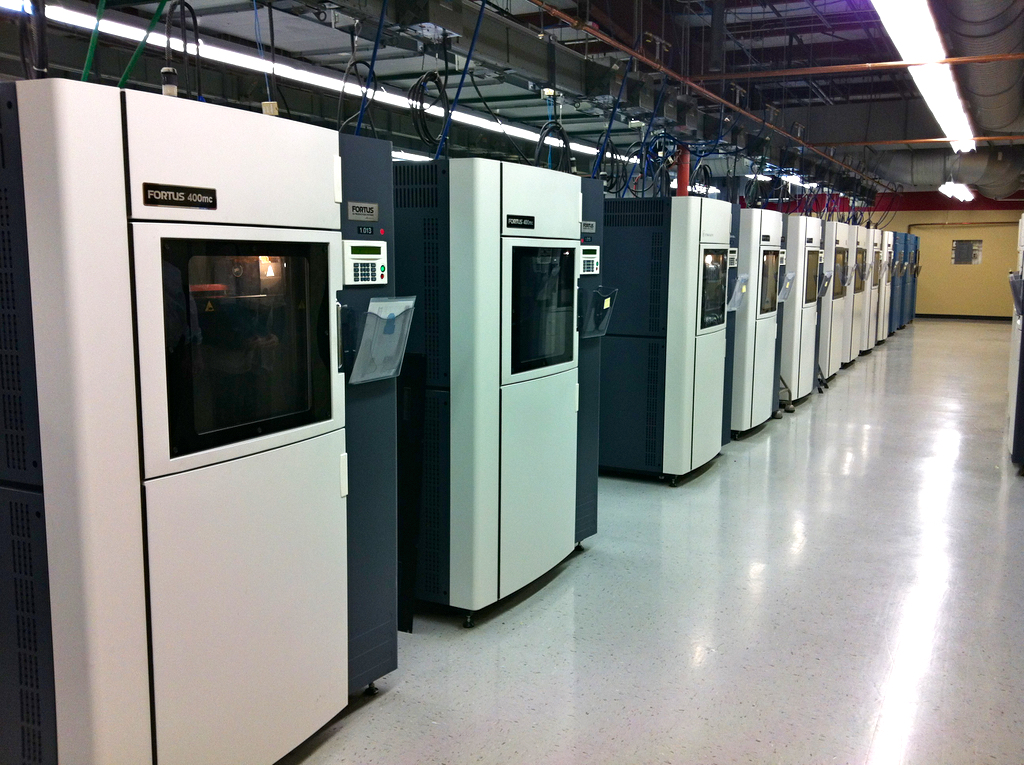3D printing has changed production processes for the better and has transformed what was originally a prototyping tool into one that engineering firms now utilize to make final products, too.
Today it is not uncommon to find 3D printers in the labs of every major manufacturer but also in the home workshops of tinkerers and craftsmen across the industrialized world.
The low-cost of 3D printers and the decreased costs required to create usable products makes the evolution of this industry one of the most interesting developments of the new century. We take a look here at what we can expect from this constantly progressing industry in the years to come.
10 things to expect from 3D printing in the future:
- Goodbye China – Localization of Manufacturing: “Made in China.” It seems like everything we own has that label on it. However, I think that Chinese manufacturers will lose out to production close to the customer due to the localization of manufacturing that 3D printing will create. Harvard Business Review seems to agree. A couple of years ago they published an article called “3D Printing will Change the World” that forecasted how 3D printing would place the manufacturing strengths of the country back in the hands of those companies that could leverage the cost advantages of the technology.
- Uber Customization of Products: The mass customization of products is made more likely due to the nature of 3D printing technology. 3D printers don’t care if you are making 500 of one product or one of 500 unique products. This allows significant customization of products because the designer can print variations of the same designs quite easily and inexpensively. Contrast this with the traditional production methodology where design changes can be very expensive to make due to the invariability of tooling. In short the manufacturing limitations of custom products are only limited to the complexities of your 3D printing software.
- Ability To Manufacture Parts That Were Not Possible Or Were Too Expensive To Manufacture Before: Traditionally, the more complicated a product is, the more expensive it is to manufacture it. Additional component parts and sub-parts may have to be designed and created through additional manufacturing processes that would also include assembly. 3D printers afford the ability to consolidate many of these additional manufacturing processes, thereby reducing costs as well as speeding up production. In addition to this 3D printing technology allows building of shapes that were extremely difficult or even impossible to create in traditional manufacturing. Consider a shape such as a Mobius strip. Using traditional manufacturing to create this shape in metal would involve multiple processes – creating the flat metal strip, a secondary bending operation and finally a welding operation to close the shape. On a 3D printer however, this could be produced in a single run, with almost no distinction between this and a much simpler shape.
- Rise of New and Innovative Materials in Manufacturing: When you think of manufacturing, what types of products do you think of? Personally, medical products are not the first thing that come to mind but new advancements in 3D printing are showing rapid growth in this sector. For example, a new material, comprised of a nylon and titanium blend, is being used for knee replacement surgery with the goal of cutting down the rehabilitation time involved in this procedure.
- Ability To Mix And Match Materials On A Much More Granular Scale During Manufacturing: Advanced 3D printers are now able to mix and match materials of a granular application such as metals and alloys, plastic powders, and glass particles. Through processes that use sintering, melting and binding, these printers can be developed to use almost any type of material, render it into a granular state, and use it to print products that require a vast mix of materials.
- Ability To Reduce Material Usage: 3D printers can create parts using intricate rigid structures that reduce material usage while still maintaining – and often improving – strength and durability standards. An Italian footwear manufacturer uses 3D printing to design, print and revise products in the same day, all while minimizing costs involved with materials as the technology allows them to do so using one print.
- Ability To Manufacture Parts Faster Than Before: Using the same example of the shoe manufacturer above, the ability for companies to create prototypes without having to create sample molds drastically cuts down on the production process. Products can be printed, tested and sent back to the computer for revision until perfected. Furthermore, these products can adopt new materials to test along the lines of strength, durability, aesthetics and comfort to name a few.
- Manufacturing Will Be Greener: 3D printing will make manufacturing greener by saving energy not only during manufacturing but also in transportation costs due to the localization of manufacturing. The day when, for example, your car will be manufactured in your local metropolitan area and its parts at the local dealership is closer than you think. The associated shipping and inventory costs will be eliminated as well. Couple this with the fact that 3D printing uses fewer materials (in production and from a waste perspective) and you have a production process that is already more environmentally friendly than current manufacturing methods. True, one of the main desktop 3D printer materials, ABS, is made of plastic that is not so great for the environment, but some spool manufacturers are introducing more environmentally-friendly materials as we speak.
- Hybrid Manufacturing: More recently 3D printing technology – an additive technology – has been married with CNC technology – a subtractive technology, opening up intriguing new applications in manufacturing. One of the major problems in 3D printing is the quality of finishes obtained in the produced parts, while one of the strengths of the CNC is the ability to maintain high tolerances and fine finishes in the produced parts. Combining the layering process of 3D printing along with machining process of CNC machines means products can be initially built using 3D printing and finished using CNC technology compensating for the weaknesses in both of these technologies.
- Disruption Of Established Supply Chain Infrastructures: Finally, with the widespread adoption of 3D printing by companies and the decreased reliability on multiple manufacturing processes, many supply chain infrastructures will be disrupted and in some cases eliminated. With an initial investment in a 3D printer, raw materials and the software required to create specific products, manufacturers will free themselves of their reliance on supply and inventory chains as more products will eventually be built in-house. Just as a transition from gasoline based transportation system to a system driven by electricity portends enormous changes in the transportation infrastructure, manufacturing supply chains also are in for massive changes as 3D printing becomes more mainstream.
The future is closer than you think
Many companies are accustomed to utilizing mass-manufacturing as a means to maintain efficiencies in scale and to keep costs-per-product down. However, 3D printing is turning this, and other notions related to product and manufactu
ring processes, on their head. After investing in a 3D printer companies free themselves of many of the restrictions that might have spurred growth such as outsourcing manufacturing, customization, costs, innovation and time from drawing board to reality
Joe Anand, President and CEO of MecSoft Corporation, a worldwide leader in providing computer-aided manufacturing (CAM) software products for the small to mid-market segments earned his MS degree, in Mechanical Engineering from Clemson University in 1984, performing research on robot path planning and simulation. Joe is a proven expert in Software Development, Mechanical Engineering, Entrepreneurship and project management and sales.



